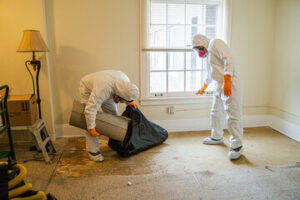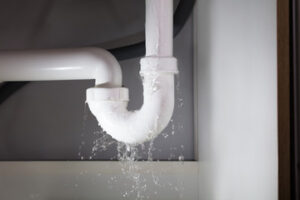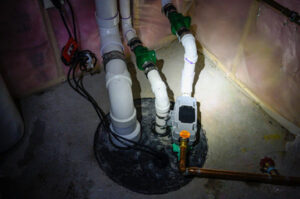Invisalign Cost Las Vegas can correct some orthodontic issues, including overcrowding and gaps between teeth. However, the effectiveness of the treatment depends on the patient’s compliance.
Patients must wear the aligners for about 20 to 22 hours a day and remove them when eating or drinking. The trays also must be regularly cleaned to avoid staining.

Invisalign is a convenient teeth-straightening solution for individuals who do not want to deal with the inconveniences and restrictions of traditional braces. Invisalign trays are removable, so patients can eat whatever they want without fear of damaging their appliances or suffering a setback in their treatment plan. However, certain foods should be avoided during this time, as they can cause pain and discomfort in the mouth. Sticky and chewy foods, like gum, should be avoided as well, as they can leave residue that may increase sensitivity or interfere with the movement of the teeth. It is also important to avoid hard or crunchy foods, as these can damage or chip the aligners and may require them to be replaced earlier than expected.
When it comes to eating, there are no food restrictions with Invisalign trays, but there are some things to be mindful of. It is recommended to brush and floss before consuming any food, as it will help to remove any particles that could linger in the mouth and cause decay. It is also important to remove the Invisalign trays before eating, as they will need to be clean in order to be effective.
It is best to eat soft foods like soup, yogurt, eggs, and bread, as these do not require much chewing. It is also important to drink plenty of water or unsweetened beverages, as these will be more beneficial to the teeth than sugary ones.
It is also recommended to avoid alcoholic beverages, as they can damage the teeth and exacerbate the effects of Invisalign. If you do choose to enjoy an alcoholic beverage, it is recommended that you wait at least 30 minutes before putting the Invisalign trays back in place. This will give the mouth time to recover from the acid and prevent any unwanted discoloration of the teeth. Keeping the Invisalign trays clean is also essential, as it will reduce the risk of them getting stuck in the teeth and causing pain or discomfort. Regularly brushing and flossing will help to keep the aligners clean, as will rinsing them with warm water.
Clear dental aligners are made to fit the unique shape of your teeth, so they’re more comfortable than traditional braces. They apply a gentle pressure on your teeth to help shift them into the correct positions. You may experience mild pain or discomfort at first, but this is usually temporary. You should only remove your aligners to eat, drink, brush and floss, or for special occasions.
Your orthodontist will give you a new set of aligners about every two weeks. You might notice some initial discomfort when you start wearing a new set, especially if it’s your first time with them. This is because your teeth will have moved some since the last time you wore them, so there will be more pressure on your teeth to shift them back into place. This pain is most likely to happen within the first week of wearing your new aligners.
Once you get used to the feeling of your aligners, you’ll hardly think about them at all. They’ll become a part of your everyday life, just like your other dental appliances. It can take a while for your mouth to adjust to talking with them in, and you might have some trouble getting the words out sometimes.
You might also find it difficult to fully seat your aligners in your mouth. This can be due to them being new or if you’ve been taking them out too often. There are soft chewies available to help you make sure that your aligners are completely inside your mouth.
If you take out your aligners too often, it can cause them to lose their shape and stop working. When this happens, your teeth will naturally drift back to their old positions, which will slow or even halt your progress. You can avoid this problem by making sure you’re wearing your aligners at least 20 to 22 hours a day.
Invisalign is a great option for people who want to straighten their teeth without the hassle of braces. There are several different types of aligners available, so talk to your orthodontist about which one is right for you. They’ll be able to recommend the best type of Invisalign for your specific needs.
Invisalign fixes common orthodontic problems like overbite, underbite, crowded teeth, gaps, and more through a series of clear aligners (trays) that no one can see. They’re also removable, so you can eat and drink what you want while in treatment. Plus, you can brush and floss normally to maintain healthy gums and teeth.
Invisible aligners work by gradually shifting your teeth into place with each new set of trays. They’re customized to treat your specific dental issues, which can vary between individuals. Some people may experience mild pain during this process, but this is normal and will subside as your teeth move into their correct positions.
You’ll need to brush your invisalign trays daily to keep them clean. Make sure you use a soft-bristled toothbrush and toothpaste that doesn’t contain baking soda, which can damage your trays. You can also buy special cleaners for invisalign that are similar to denture cleaning tablets and work by dissolving in water. These are much easier to use and provide a more thorough clean.
It’s also important to rinse your trays with warm water after every time you remove them. This will help prevent stains and reduce the buildup of harmful bacteria. It’s a good idea to do this twice a day, around the same time you brush and floss. If you forget to wash your trays regularly, it can lead to toothache, bad breath, and even permanent tooth damage caused by bacteria that eat away at the enamel.
Another problem some patients have with invisible aligners is that they can cause a slight lisp during the straightening process. This is because your tongue and cheek have to adjust to the foreign object in your mouth all the time. The lisp typically goes away once you’re finished wearing the trays.
Lastly, it’s important to remember that your aligners are not meant to be chewed. Chewing on them can damage the plastic and cause dents or breakage. It’s also a good idea to store them in a case when you aren’t wearing them to protect them from food and drinks that can stain the tray.
When you’re wearing invisalign, it is crucial to keep them clean. Failure to do so can cause a variety of issues. For example, food particles can get trapped between the aligner and your teeth, leading to bad breath and potential gum disease. It is also important to regularly soak your aligners in a diluted mouthwash or denture cleaner to keep them free from bacteria. Poor oral hygiene can lead to a build-up of plaque and tartar, which will require more expensive dental procedures to remove.
Although it may seem daunting to have to follow a strict cleaning routine, it is important to do so in order to get the most out of your treatment. If you have any questions or concerns, make sure to speak with your dentist or orthodontist, as they will be able to provide you with the best advice.
Some cleaning methods should be avoided, as they could damage your aligners. For example, abrasive materials can scratch the surface of your aligners, and this can allow bacteria to hide. Also, soaking your aligners in hot water can warp them, so it is important to use lukewarm water instead. Finally, bleach is far too harsh for your aligners and can damage them.
A good cleaning regimen should involve brushing your aligners twice a day and rinsing them when you’re finished. It is also a good idea to brush the interior of your aligners, as well as the exterior, to keep them clean and hygienic. After brushing, you should rinse them thoroughly with lukewarm water.
While there are many cleaning products available, it is best to stick with those that are specifically formulated for use on invisalign. These cleaners can help to remove any stubborn stains that are difficult to remove with regular soap and water. You can also purchase cleaning crystals that are designed to work safely on your aligners, so you don’t have to worry about damaging them with other cleaning methods.
Rinse your aligner case regularly is also a good idea, as mold can grow in a dirty case. It would be best to wait until it is completely dry before putting your aligners back in.


